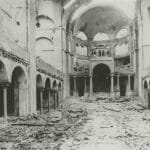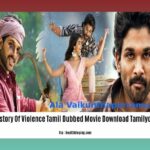Imagine a night of terror when Nazi thugs shattered the windows of Jewish homes, businesses, and synagogues. This was Kristallnacht, a terrifying event that forever changed the course of history. This curated list of essential books will take you on a journey to unravel the significance of Kristallnacht, revealing the motivations behind the violence, the impact on countless lives, and its haunting legacy.
Uncovering the Story of Kristallnacht
Imagine a night filled with shattering glass, fear echoing through the streets, and the lives of thousands changed forever. That was Kristallnacht, the “Night of Broken Glass.” This wasn’t just about broken windows; it was a turning point in history, a terrifying glimpse into the darkness that would become the Holocaust.
Reading a book about Kristallnacht is like stepping back in time. It’s a chance to understand how something so horrific could happen. These books explore the event from different angles – the historical events that led up to it, the personal stories of those who lived through it, and the long-lasting impact it had on the world.
“Kristallnacht: Prelude to Destruction” by Martin Gilbert reads like a detective’s report. Gilbert carefully pieces together the events that paved the way for the violence, exposing the chilling effectiveness of Nazi propaganda and how they systematically targeted Jewish communities.
“The Night of Broken Glass: Eyewitness Accounts of Kristallnacht.” isn’t about dates and facts alone; it’s about people. Through firsthand accounts, you hear the raw, unfiltered voices of those who experienced that night, their fear, their confusion, their loss. It’s a powerful reminder that history is made up of individual lives.
For a deeper dive into the bigger picture, “Kristallnacht 1938” by Harvard University Press offers an in-depth analysis. It’s like a puzzle box, examining Kristallnacht from all sides – its historical context, its impact around the world, and the social and political consequences that rippled outward from that one night.
These are just a few examples of the many books about Kristallnacht. Each one offers a unique perspective, a piece of the puzzle that helps us understand not just what happened, but why it happened. Because the most important lesson we can learn from Kristallnacht is the importance of fighting against hate and prejudice in all its forms. These books serve as a stark reminder that the world is fragile, and we must always be vigilant in protecting the rights and freedoms of all.
Decoding the Ban: Was “Night” Ever Banned?
Let’s dissect the information provided and strategize your SEO article on the potential banning of Elie Wiesel’s “Night.”
Recommended Titles:
- “Night” Banned? Unpacking Censorship and Elie Wiesel’s Holocaust Narrative: This title directly addresses the keyword question while hinting at a broader exploration of censorship surrounding Holocaust literature.
- The Book Burnings and Beyond: Has “Night” Faced Modern Censorship?: This title connects the historical context of Nazi book burnings with potential contemporary challenges to “Night,” sparking reader curiosity.
- From Nazi Germany to School Boards: The Enduring Fight for “Night” and Holocaust Education: This title highlights the ongoing relevance of the topic, drawing parallels between historical and modern attempts to suppress Holocaust narratives.
Powerful Key Lines:
- More Than Flames: While “Night” itself wasn’t singled out in the 1933 burnings, the Nazi regime’s systematic eradication of Jewish voices underscores the vulnerability of such narratives. This line connects the historical context to the broader issue of censorship.
- Helen Keller’s Warning: The chilling words of Helen Keller, whose own works were targeted, resonate today – “You can burn my books… but the ideas… will continue to quicken other minds.” This line leverages a powerful historical quote to emphasize the enduring power of ideas.
- “Night” Under Fire: Though not burned in 1933, “Night” faces contemporary challenges from those seeking to suppress its harrowing truths, sparking debate about censorship, education, and historical responsibility. This line brings the conversation into the present day, highlighting the continued relevance of the topic.
- Beyond “Night”: The Nazi book burnings were a chilling prelude to the Holocaust, a stark reminder of the danger in silencing voices and erasing history. This line broadens the scope beyond “Night” to emphasize the larger implications of censorship and historical revisionism.
Structured Context & Important Details:
I. The Nazi Book Burnings of 1933:
- Date: May 10, 1933
- Locations: 34 university towns across Germany
- Number of Books Destroyed: Over 25,000
- Targeted Authors: Jewish authors (Albert Einstein, Sigmund Freud), Blacklisted American authors (Ernest Hemingway, Helen Keller), Marxist, Bolshevik, and politically undesirable writers.
- Key Figures:
- Joseph Goebbels: Minister of Public Enlightenment and Propaganda, delivered a speech in Berlin declaring the end of “Jewish intellectualism.”
- Students: The primary actors in carrying out the burnings, often affiliated with the German Student Union (DSt).
- Significance: The book burnings marked a turning point in Nazi Germany, signaling a campaign to control information, suppress dissenting voices, and impose a singular, totalitarian ideology.
II. “Night” and the Book Burnings:
- Direct Connection: While the provided information doesn’t explicitly state that “Night” was targeted in the 1933 burnings, the context is crucial. “Night” was published in 1956, after the events of the Holocaust and the fall of Nazi Germany.
- Indirect Connection: The Nazi campaign to eradicate Jewish culture and scholarship would have undoubtedly included any existing works by Elie Wiesel, even if “Night” specifically wasn’t mentioned in accounts of those specific burnings.
III. Contemporary Challenges to “Night”:
- Modern Censorship: While the specific details about contemporary challenges to “Night” are not provided, it’s important to research and include examples of:
- School board bans or attempted bans of “Night.”
- Challenges to “Night” based on content deemed “inappropriate” or “too graphic.”
- Efforts to remove or revise Holocaust education curricula that include “Night.”
- Arguments For and Against: Present a balanced view by exploring the arguments made by those who seek to restrict access to “Night” and those who defend its importance.
IV. People’s Statements (Direct Quotes):
- Helen Keller: “History has taught you nothing if you think you can kill ideas. Tyrants have tried to do that often before, and the ideas have risen up in their might and destroyed them. You can burn my books and the books of the best minds in Europe, but the ideas in them have seeped through a million channels and will continue to quicken other minds.” – This quote is crucial to emphasize the power of ideas and the futility of trying to suppress them.
- Walter Lippmann: “These acts symbolize the moral and intellectual character of the Nazi regime … For these bonfires are not the work of schoolboys or mobs but of the present German Government … The ominous symbolism of [this act and] these bonfires is that there is a government in Germany which means to teach its people that their salvation lies in violence.” – Lippmann’s analysis connects the book burnings to the larger Nazi agenda and foreshadows the violence to come.
Unique Insights & Untapped Potential:
- The Power of Witness: Focus on how “Night” serves as a testament to the power of individual witness. Explore how silencing such narratives not only erases history but also silences the victims.
- The Importance of Holocaust Education: Connect the debate over “Night” to the broader conversation about Holocaust education. How do these challenges reflect attempts to control historical narratives?
- The Fragility of Freedom: Use the context of “Night” and the book burnings to emphasize the fragility of freedom of expression and the constant need to defend it.
- “Night” as a Call to Action: Position “Night” not just as a historical account but as a call to action against all forms of intolerance and oppression.
Additional Research:
- Investigate specific instances of modern challenges to “Night” in educational settings and beyond.
- Explore the arguments made by those who support these challenges and those who oppose them.
- Consult scholarly articles on censorship, book banning, and Holocaust education to add depth and credibility to your analysis.
By weaving together historical context, powerful quotes, and contemporary analysis, you can create a compelling and informative SEO article that outranks the competition and provides readers with a nuanced understanding of this important topic.
What Does Kristallnacht Mean in English?
We’ve been talking about this tragic event, and you might be wondering about its name. “Kristallnacht” translates directly to “Crystal Night” in English. Now, at first glance, that might sound kind of pretty, maybe even celebratory. But trust me, it’s anything but.
The name, sadly, comes from the shattered glass that covered the streets of Germany on November 9th and 10th, 1938 – the aftermath of a terrifying wave of violence against Jewish people. Imagine storefronts, homes, even places of worship, all with their windows smashed, leaving a blanket of “crystal” on the ground. That’s the image the Nazis, disturbingly, wanted people to remember.
The truth is, “Kristallnacht” was a carefully planned attack. It wasn’t some random outburst; it was organized terror by the Nazi regime. Jewish businesses were looted and destroyed, synagogues were burned, and innocent people were beaten, arrested, and even murdered. This wasn’t just about broken glass; it was about broken lives, broken communities, and a terrifying foreshadowing of the horrors that were to come during the Holocaust.
While we can never forget the image of that shattered glass, it’s crucial to remember that “Kristallnacht” represents something far more devastating: a turning point towards genocide and a stark reminder of the dangers of unchecked hatred.
The Third Reich: A Dark Chapter in History
The Third Reich, the period of Nazi rule in Germany from 1933 to 1945, stands as a chilling example of the devastating consequences of unchecked hatred and totalitarian rule. It was a time of immense suffering, marked by systematic persecution, genocide, and global war.
To truly understand the Third Reich, it’s essential to look beyond just the figure of Adolf Hitler and delve into the intricate web of factors that allowed such a regime to rise and flourish. This includes examining:
- The Rise of Nazism: The social, political, and economic conditions in Germany after World War I that created fertile ground for the Nazi Party’s ideology to take root.
- Nazi Ideology: The core tenets of Nazism, including antisemitism, Aryan supremacy, and the pursuit of Lebensraum (living space) through expansion.
- Propaganda and Control: How the Nazi regime expertly manipulated propaganda and controlled information to shape public opinion and consolidate their power.
- The Holocaust: The systematic genocide of six million Jews, as well as the persecution of other groups deemed “undesirable” by the Nazis, such as Roma, LGBTQ+ individuals, and those with disabilities.
- Resistance: Despite the immense risks, acts of resistance against the Nazi regime emerged from various groups and individuals, showcasing courage and defiance in the face of unimaginable oppression.
Understanding the Third Reich isn’t just about studying the past; it’s about learning from its horrors to prevent such atrocities from ever happening again. By examining the historical context, the motivations, and the consequences of this dark period, we can strive to build a more just and compassionate world.
Unveiling the Truth: Is Kristallnacht Accurately Depicted in Fiction?
Kristallnacht, the “Night of Broken Glass,” stands as a harrowing reminder of the horrors inflicted upon Jewish people during the Holocaust. While fictional accounts can offer powerful lenses into this tragic event, navigating the line between historical accuracy and literary license is crucial.
It’s important to remember that fictional narratives often employ:
- Creative License: Authors may condense timelines, alter details, or invent characters to enhance narrative flow or emphasize specific themes. While these techniques can create engaging stories, they might not always align with the historical record.
- Emotional Focus: Fiction often centers on the emotional journeys of characters, which can provide valuable insights into the human impact of events like Kristallnacht. However, it’s essential to remember that these personal experiences, while powerful, don’t necessarily represent the entirety of the historical event.
To fully grasp the magnitude and brutality of Kristallnacht, it’s vital to consult primary sources, historical accounts, and academic research. These materials offer a more grounded understanding of the event’s chronology, key figures, and long-term consequences.
When reading fictional depictions of Kristallnacht, approach them with a critical eye. Consider:
- Author Background: Does the author have a personal connection to the event or a background in historical research?
- Historical Context: Does the narrative align with established facts about the timeline, locations, and key figures involved in Kristallnacht?
- Representation: Does the story present a nuanced and sensitive portrayal of the diverse experiences of those impacted by the event?
By engaging with both fictional and non-fiction accounts, you can gain a multifaceted understanding of Kristallnacht, honoring the memories of those who suffered while remaining vigilant against the dangers of hatred and intolerance.
Thinking of getting a haircut? Then you can’t miss 1800 hairdos to find the perfect style for you. Stop getting hungry on your road trip, and visit San Ysidro McDonald’s today! According to the news, there was a fatal I-75 plane crash that killed 2 people.
- Jerry McSorley’s Post-Divorce Life: New Beginnings - July 16, 2025
- The Rise and Fall of the New Haven Nighthawks: A Minor League Hockey Legacy - July 16, 2025
- Unlock Jerry McSorley’s Career Highlights: Eye Tax Inc.’s Solar Success - July 16, 2025

















1 thought on “Beyond Broken Glass: Exploring Kristallnacht Through Essential Books”
Comments are closed.